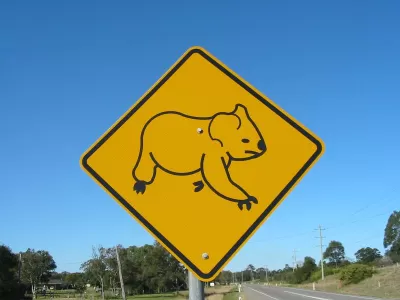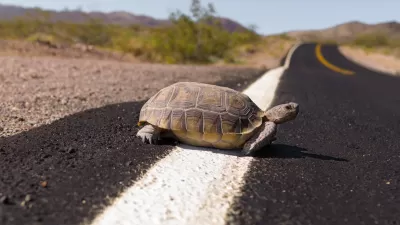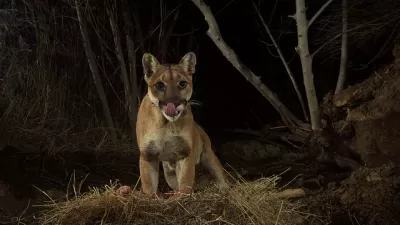When urban areas intrude into former wildlife habitat areas, animals face challenges moving across busy roadways. In Australia, designers have worked to create passages for koalas to avoid the dangers of speeding motorists.

Australia's koala population is under threat as sprawl in New South Wales and Queensland is leading to what has been described as a "a genuinely apocalyptic scenario" that could drive the local koala population into extinction. Darryl Jones of The Conversation (as reported in Phys.org) reports that koalas have adapted to urban intrusion less successfully than other types of wildlife, with one of the major causes of death being collisions with cars. In response, designers have looked at various methods to keep koalas from crossing roadways while still allowing a wide range of movement that was also important to the health of the koala population. One solution has been to adapt box culverts typically found under roadways to allow for passage of smaller animals. To create a safe passage that avoided the water that typically runs through the culverts, designers built a wide ledge that allowed smaller animals to easily walk through.
By attaching a wide ledge to the side of the culvert leading from one side of the road to the other, animals could potentially traverse the danger zone above.
This possibility proved unexpectedly fruitful. Within only a few weeks, a remarkable suite of fauna including echidnas, wallabies, possums and goannas had found and used the ledges. But most exciting of all were the numerous koalas captured on the monitoring cameras and tracked by various technologies. These otherwise arboreal marsupials, whose main proclivity is climbing trees or walking – quickly – to the next tree, had somehow discovered a way of avoiding the great risks of the traffic above by travelling below on an artificial ledge over water in a dark tunnel!
Jones reports that authorities are also looking at changing the behavior of drivers, who have shown little response to wildlife signs placed along the roadway. Electronic signs that report the speed of drivers and changes in roadway paving color have been suggested as possible methods to get drivers to slow down in wildlife crossing areas.
FULL STORY: Saving koalas through urban design

Maui's Vacation Rental Debate Turns Ugly
Verbal attacks, misinformation campaigns and fistfights plague a high-stakes debate to convert thousands of vacation rentals into long-term housing.

Planetizen Federal Action Tracker
A weekly monitor of how Trump’s orders and actions are impacting planners and planning in America.

In Urban Planning, AI Prompting Could be the New Design Thinking
Creativity has long been key to great urban design. What if we see AI as our new creative partner?

How Trump's HUD Budget Proposal Would Harm Homelessness Response
Experts say the change to the HUD budget would make it more difficult to identify people who are homeless and connect them with services, and to prevent homelessness.

The Vast Potential of the Right-of-Way
One writer argues that the space between two building faces is the most important element of the built environment.

Florida Seniors Face Rising Homelessness Risk
High housing costs are pushing more seniors, many of them on a fixed income, into homelessness.
Urban Design for Planners 1: Software Tools
This six-course series explores essential urban design concepts using open source software and equips planners with the tools they need to participate fully in the urban design process.
Planning for Universal Design
Learn the tools for implementing Universal Design in planning regulations.
Gallatin County Department of Planning & Community Development
Heyer Gruel & Associates PA
JM Goldson LLC
City of Camden Redevelopment Agency
City of Astoria
Transportation Research & Education Center (TREC) at Portland State University
Jefferson Parish Government
Camden Redevelopment Agency
City of Claremont





























